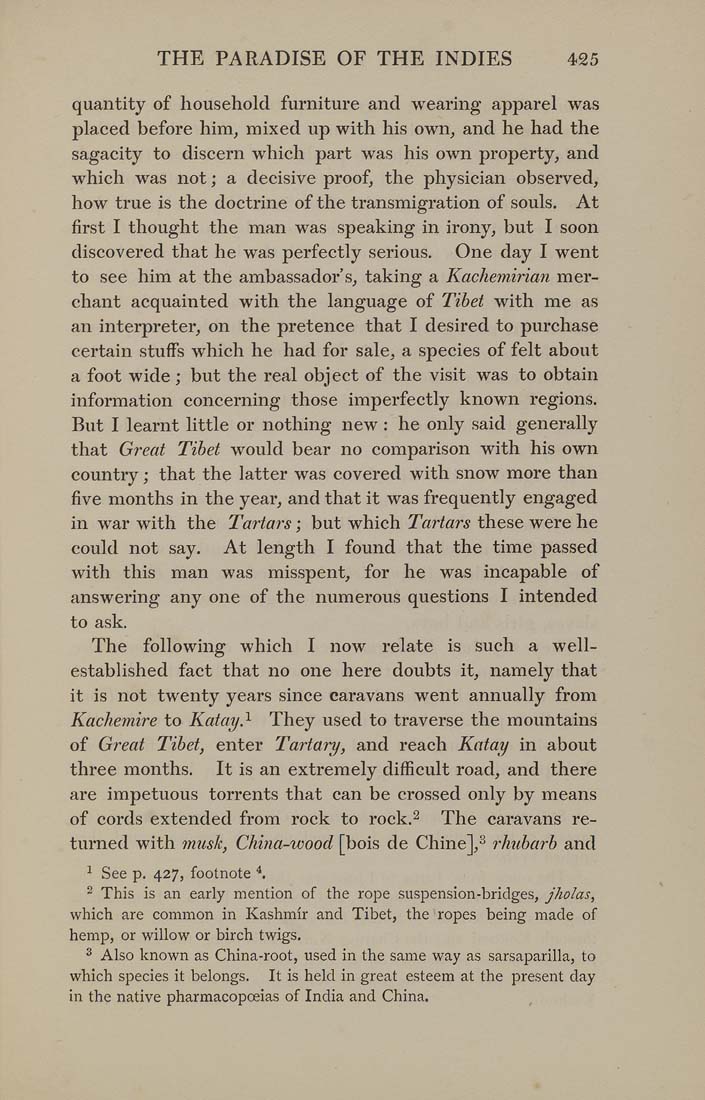THE PARADISE OF THE INDIES 425
quantity of household furniture and wearing apparel was
placed before him, mixed up with his own, and he had the
sagacity to discern which part was his own property, and
which was not; a decisive proof, the physician observed,
how true is the doctrine of the transmigration of souls. At
first I thought the man was speaking in irony, but I soon
discovered that he was perfectly serious. One day I went
to see him at the ambassador's, taking a Kachemirian mer¬
chant acquainted with the language of Tibet with me as
an interpreter, on the pretence that I desired to purchase
certain stuffs which he had for sale, a species of felt about
a foot wide; but the real object of the visit was to obtain
information concerning those imperfectly known regions.
But I learnt little or nothing new : he only said generally
that Great Tibet would bear no comparison with his own
countiy; that the latter was covered with snow more than
five months in the year, and that it was frequently engaged
in war with the Tartars; but which Tartars these were he
could not say. At length I found that the time passed
with this man was misspent, for he was incapable of
answering any one of the numerous questions I intended
to ask.
The following which I now relate is such a well-
established fact that no one here doubts it, namely that
it is not twenty years since caravans went annually from
Kachemire to Katay.^ They used to traverse the mountains
of Great Tibet, enter Tartary, and reach Katay in about
three months. It is an extremely difficult road, and there
are impetuous torrents that can be crossed only by means
of cords extended from rock to rock.^ The caravans re¬
turned with musk, China-wood [bois de Chine],' rhubarb and
' See p. 427, footnote *.
2 This is an early mention of the rope suspension-bridges, jholas,
which are common in Kashmir and Tibet, the ropes being made of
hemp, or willow or birch twigs.
^ Also known as China-root, used in the same way as sarsaparilla, to
which species it belongs. It is held in great esteem at the present day
in the native pharmacopoeias of India and China.
|








